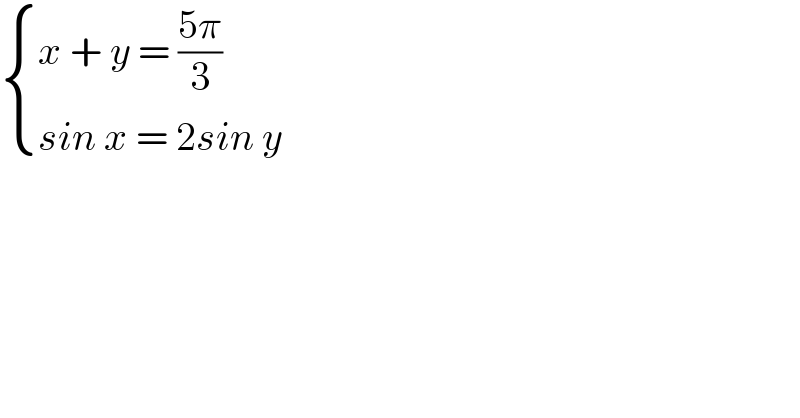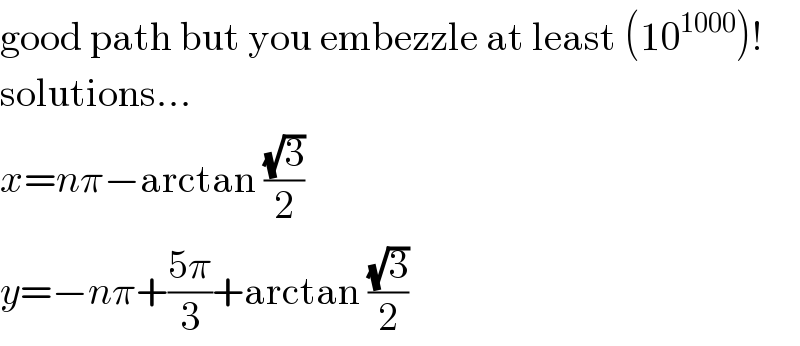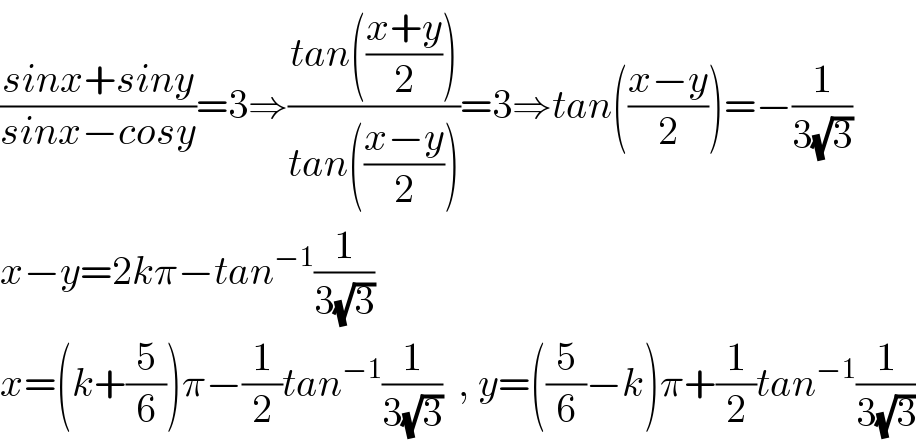
Question and Answers Forum
Question Number 125359 by weltr last updated on 10/Dec/20

Answered by Ar Brandon last updated on 10/Dec/20
![{ ((x+y=((5π)/3)),(...(i))),((sinx=2siny),(...(ii))) :} From (i), x+y=((5π)/3) ⇒ y=((5π)/3)−x substituting the above result in (ii) we have ; sinx=2sin(((5π)/3)−x)=2sin(π+(((2π)/3)−x))=2sin(x−((2π)/3)) {sin(π+x)=−sinx=sin(−x)} =2[sin(x)cos(((2π)/3))−cos(x)sin(((2π)/3))] =2[−(1/2)sinx−((√3)/2)cosx]=−sinx−(√3)cosx ⇒2sinx=−(√3)cosx ⇒ tanx=−((√3)/2) x=tan^(−1) (−((√3)/2)) , y=((5π)/3)−tan^(−1) (−((√3)/2))](Q125361.png)
Commented by MJS_new last updated on 10/Dec/20

Commented by Ar Brandon last updated on 10/Dec/20
������
Commented by Ar Brandon last updated on 10/Dec/20
Thanks majesty ��
Commented by Ar Brandon last updated on 10/Dec/20
mjs, I meant ����
Commented by Ar Brandon last updated on 10/Dec/20
Extend my greetings to her majesty Sir �� Tell her I miss her so much����
Commented by Dwaipayan Shikari last updated on 10/Dec/20
you can't tell that you have told
Commented by Ar Brandon last updated on 10/Dec/20
tell, told, till����
Commented by Dwaipayan Shikari last updated on 10/Dec/20
�� ����
Commented by Ar Brandon last updated on 10/Dec/20
��I prefer this��
Commented by Ar Brandon last updated on 10/Dec/20
শুভ দিন��
Commented by Dwaipayan Shikari last updated on 10/Dec/20
হো
Answered by Dwaipayan Shikari last updated on 10/Dec/20

